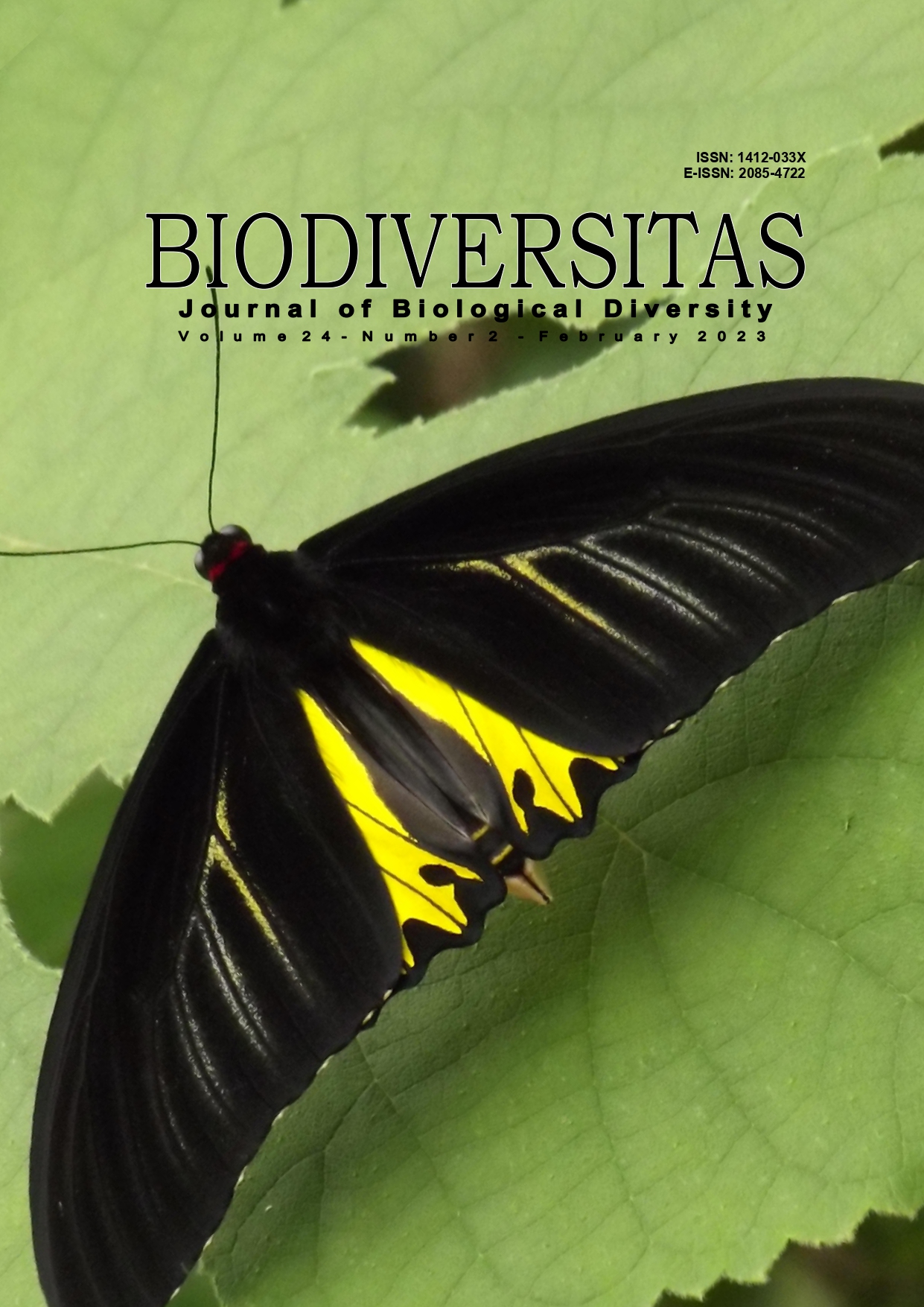Short Communication: Avian sanctuary within the city in Timaco Hill, Cotabato City, Bangsamoro Autonomous Region in Muslim Mindanao (BARMM), Mindanao Island, Philippines
##plugins.themes.bootstrap3.article.main##
Abstract
Abstract. Vera PJD, Catipay JPC, Tagoon MDT, Baron EMD, Pinggoy BA. 2023. Short Communication: Avian sanctuary within the city in Timaco Hill, Cotabato City, Bangsamoro Autonomous Region in Muslim Mindanao (BARMM), Mindanao Island, Philippines. Biodiversitas 24: 1004-1009. The habitats provided by urban green spaces are vital for conserving different wildlife species, especially birds. Although several studies outside the Philippines highlight the value of urban green spaces, including urban hills, as essential bird sanctuaries, limited accessible information exists in the Philippines. To date, no published information is available about birds in the urban green spaces of Cotabato City, including Timaco Hill. This gap highlights the need to conduct an avifaunal inventory in the area. In this preliminary, rapid assessment, two field observers documented bird species through vantage point field observations from June 06-13, 2022. A total of forty-three species of birds were documented. Ten avian species recorded are endemic, including the Philippine duck (Anas luzonica), which is currently listed in the vulnerable category based on the IUCN Red List of Threatened Species. The results of the current avifaunal inventory highlight the value of Timaco Hill as an important sanctuary of birds in Cotabato City. Results can also be used to promote the declaration of this urban hill as an eco-tourism site. The area may require prompt protection measures to sustain its capacity to serve as a bird sanctuary. More intensive surveys are also necessary to ascertain if the current count presented in the study is the complete list of birds of Timaco Hill.

